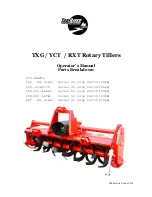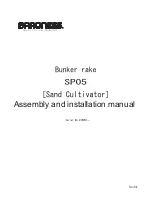
SERVICE POLICY & PROCEDURES
YCAL0012-0032 60 HZ
START-UP CHECKLIST
Supersedes: 150.66-CL2 (309)
Form 150.66-CL2 (820)
COMMISSIONING
Commissioning of this unit should only
be carried out by Johnson Controls
Authorized personnel.
Commissioning personnel should be thoroughly familiar
with the information contained in this literature, in ad-
dition to this section.
Perform the commissioning using the detailed checks
as the com-
missioning procedure is carried out.
PREPARATION – POWER OFF
The following basic checks should be made with the
customer power to the unit switched OFF.
Inspection
Inspect unit for installation damage. If found, take action
and/or repair as appropriate.
Refrigerant Charge
Packaged units are normally shipped as standard with a
full refrigerant operating charge. Check that refrigerant
pressure is present in both systems and that no leaks are
apparent. If no pressure is present, a leak test must be
undertaken, the leak(s) located and repaired. Remote
systems and units are supplied with a nitrogen hold-
ing charge. These systems must be evacuated with a
suitable vacuum pump/recovery unit as appropriate to
below 500 µm.
Do not liquid charge with static water in the cooler.
Care must also be taken to liquid charge slowly to avoid
excessive thermal stress at the charging point. Once the
vacuum is broken, charge into the condenser coils with
the full operating charge.
Service and Oil Line Valves
Open each compressor suction, economizer, and dis-
charge service valve. If valves are of the back-seat type,
open them fully (counterclockwise) then close one turn
of the stem to ensure operating pressure is fed to pressure
transducers. Open the liquid line service valve and oil
return line ball valve fully in each system.
Compressor Oil
To add oil to a circuit - connect a YORK hand oil pump
(Part No. 470-10654-000) to the 1/4 in. oil charging
valve on the oil separator piping with a length of clean
hose or copper line, but do not tighten the flare nut. Us
-
ing clean oil of the correct type (F oil), pump oil until
all air has been purged from the hose then tighten the
nut. Stroke the oil pump to add oil to the oil system.
The oil level should be between the middle of the lower
and middle of the upper sight glasses of the oil separa-
tor. Approximately 4 gal to 5 gal is present in the each
refrigerant system, with typically 1 gal to 2 gal in each
oil separator. Oil levels in the oil separators above the
top sight glass in either oil separator should be avoided
and may cause excessive oil carryover in the system.
High oil concentration in the system may cause nuisance
trips resulting from incorrect readings on the level sensor
and temperature sensors. Temperature sensor errors may
result in poor liquid control and resultant liquid overfeed
and subsequent damage to the compressor.
Fans
Check that all fans are free to rotate and are not dam-
aged. Ensure blades are at the same height when rotated.
Ensure fan guards are securely fixed.
Isolation / Protection
Verify all sources of electrical supply to the unit are taken
from a single point of isolation. Check that the maximum
recommended fuse sizes given in the
Technical Data
Section in IOM (150.66-NM2)
has not been exceeded.
























